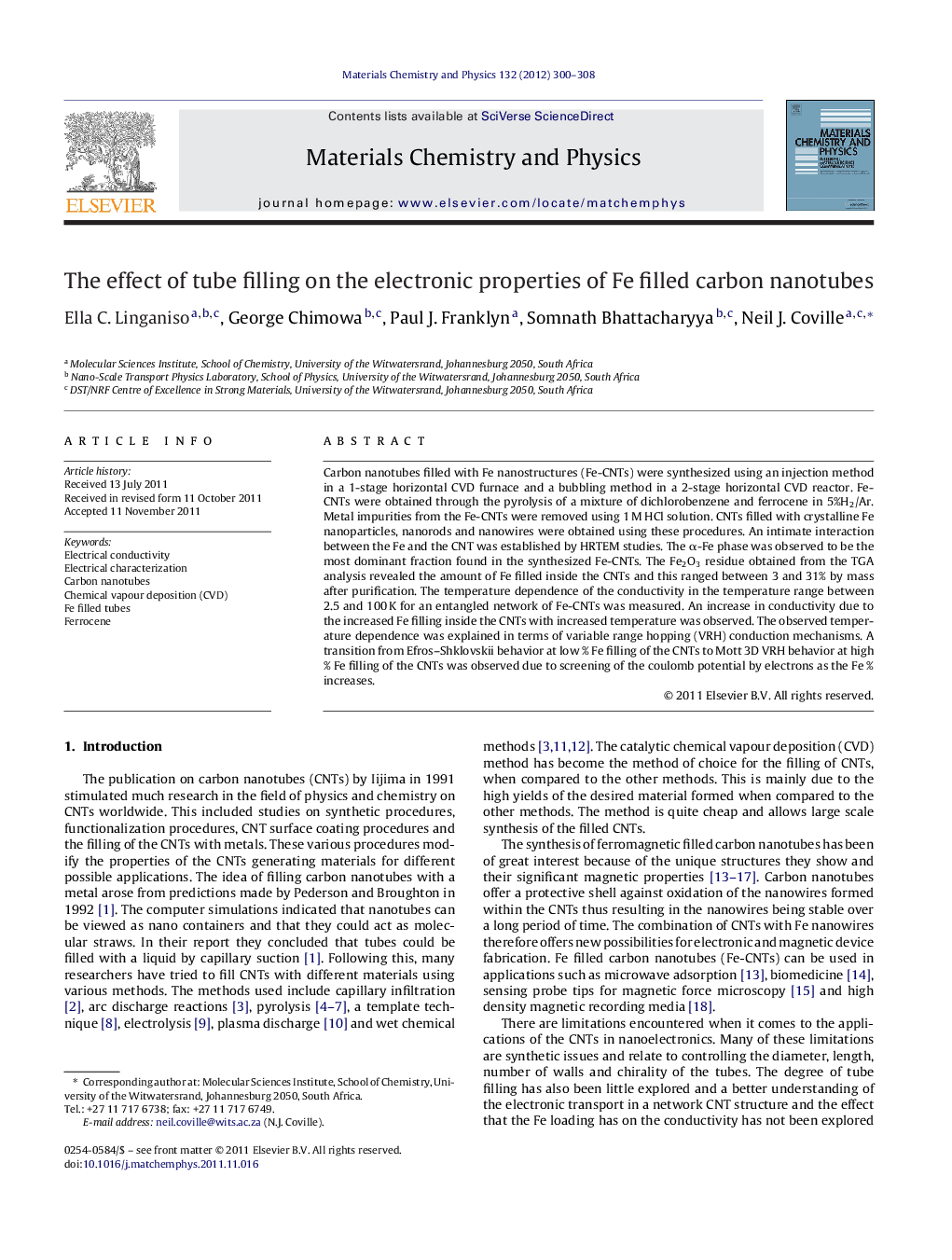| Article ID | Journal | Published Year | Pages | File Type |
|---|---|---|---|---|
| 1523615 | Materials Chemistry and Physics | 2012 | 9 Pages |
Carbon nanotubes filled with Fe nanostructures (Fe-CNTs) were synthesized using an injection method in a 1-stage horizontal CVD furnace and a bubbling method in a 2-stage horizontal CVD reactor. Fe-CNTs were obtained through the pyrolysis of a mixture of dichlorobenzene and ferrocene in 5%H2/Ar. Metal impurities from the Fe-CNTs were removed using 1 M HCl solution. CNTs filled with crystalline Fe nanoparticles, nanorods and nanowires were obtained using these procedures. An intimate interaction between the Fe and the CNT was established by HRTEM studies. The α-Fe phase was observed to be the most dominant fraction found in the synthesized Fe-CNTs. The Fe2O3 residue obtained from the TGA analysis revealed the amount of Fe filled inside the CNTs and this ranged between 3 and 31% by mass after purification. The temperature dependence of the conductivity in the temperature range between 2.5 and 100 K for an entangled network of Fe-CNTs was measured. An increase in conductivity due to the increased Fe filling inside the CNTs with increased temperature was observed. The observed temperature dependence was explained in terms of variable range hopping (VRH) conduction mechanisms. A transition from Efros–Shklovskii behavior at low % Fe filling of the CNTs to Mott 3D VRH behavior at high % Fe filling of the CNTs was observed due to screening of the coulomb potential by electrons as the Fe % increases.
Graphical abstractHRTEM image of a twisted CNT filled with a bent single crystal of Fe. Insets from top to bottom show the power spectra of the corresponding regions, indicating the twisting of the Fe lattice. Inset in the top right shows the relative angling of the lattice fringes to accommodate the twisting of the Fe.Figure optionsDownload full-size imageDownload as PowerPoint slideHighlights► Synthesis of Fe filled CNTs with Fe content varying from 3 to 35%. ► TEM analysis indicates that Fe in the tubes is in contact with the CNTs. ► TEM analysis reveals that α-Fe crystallizes after CNT formation. ► Temperature dependent electronic transport measurements performed. ► Conductivity varies with the % Fe filling in the CNTs.
